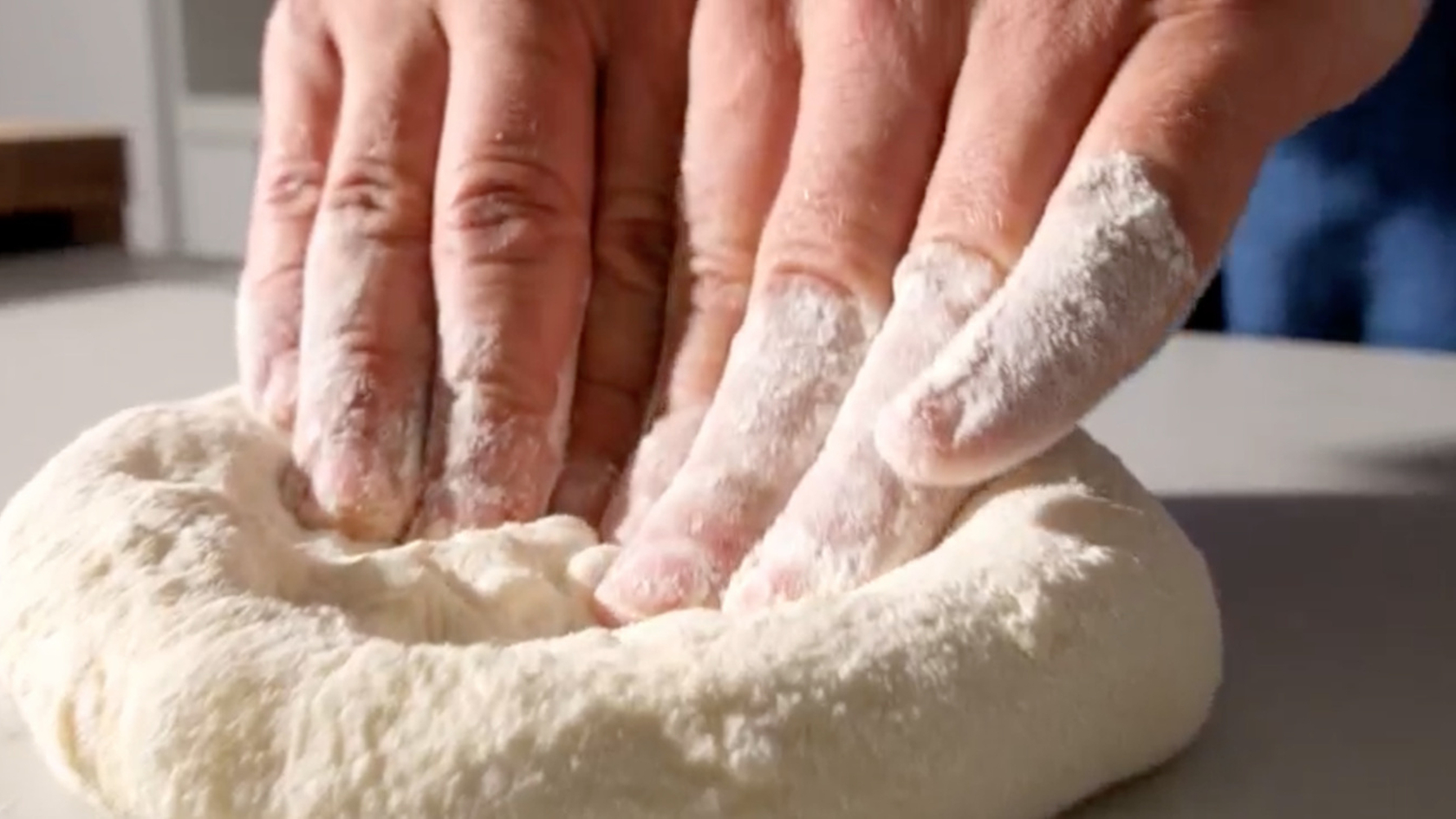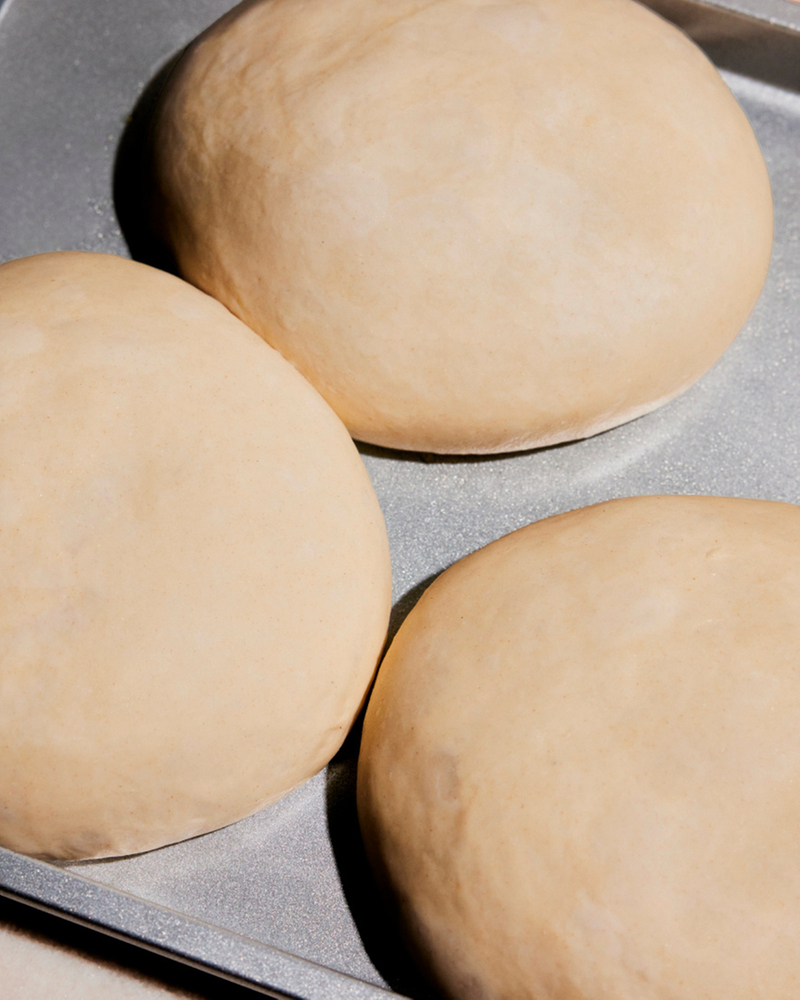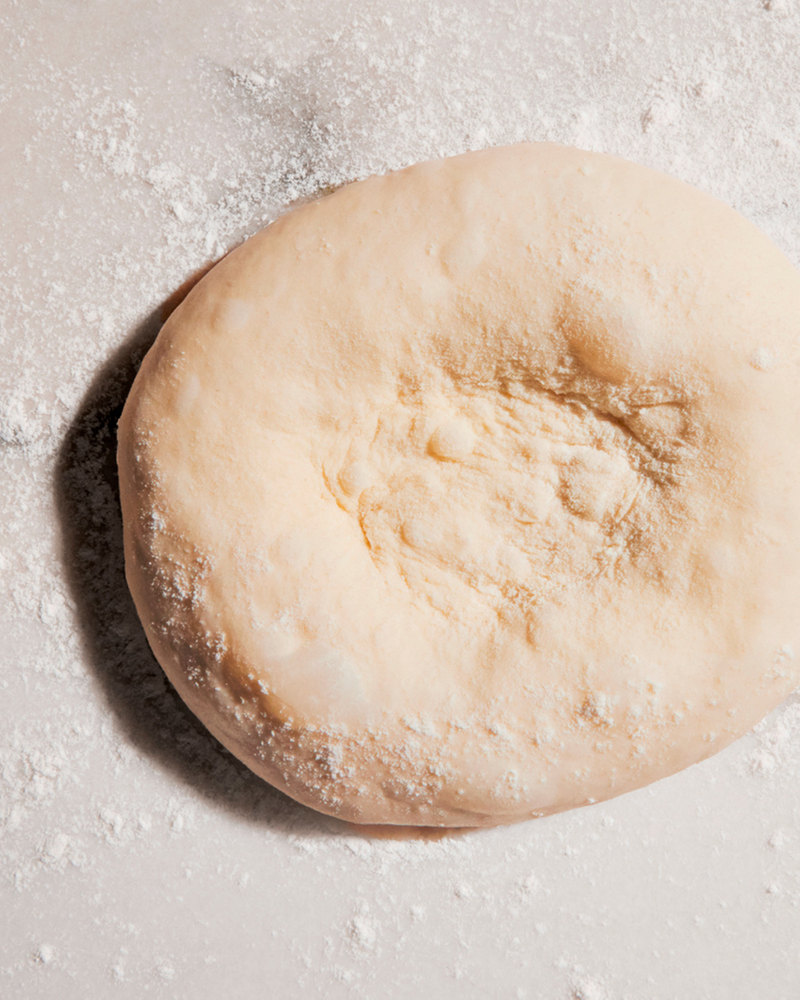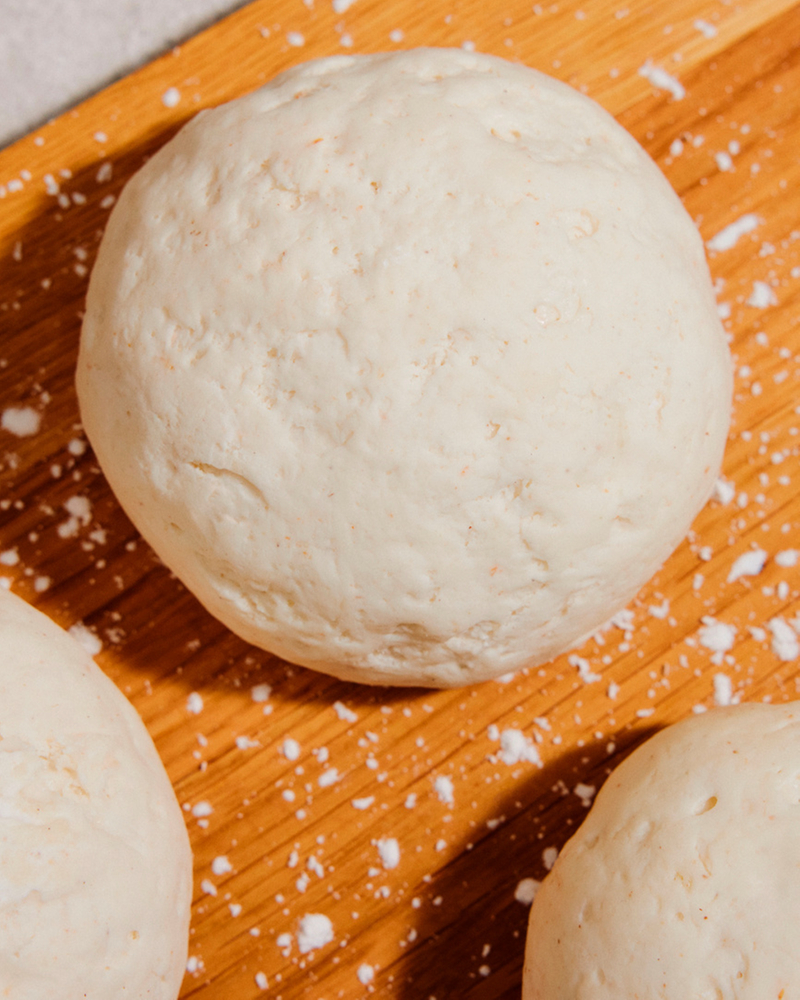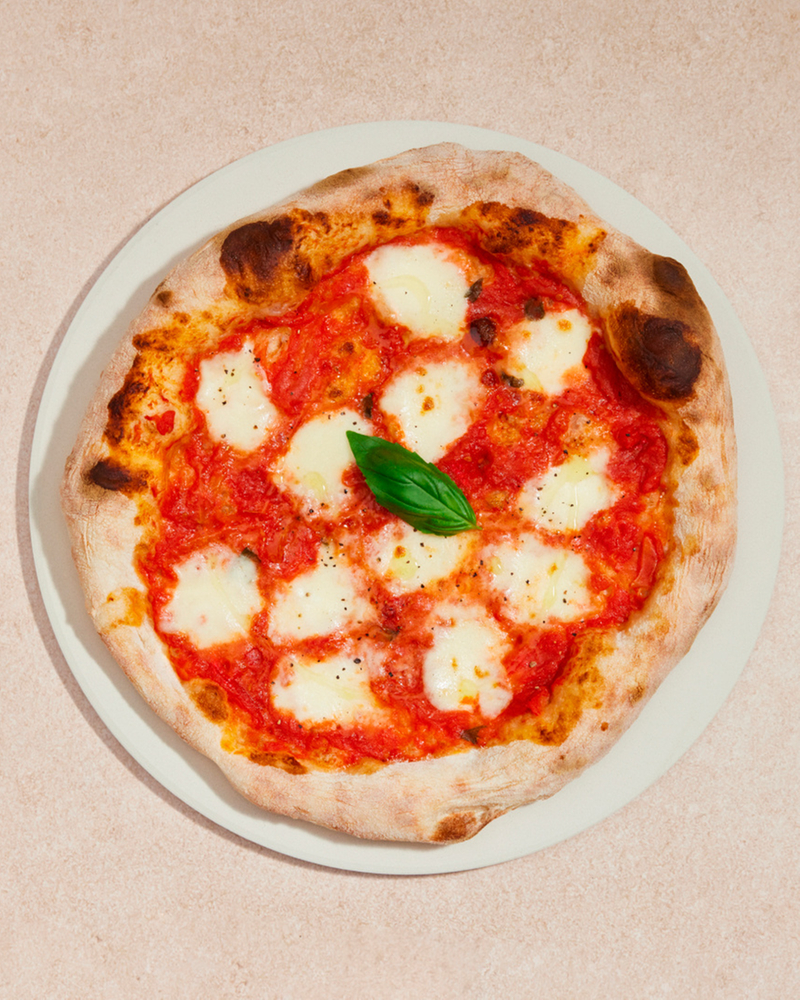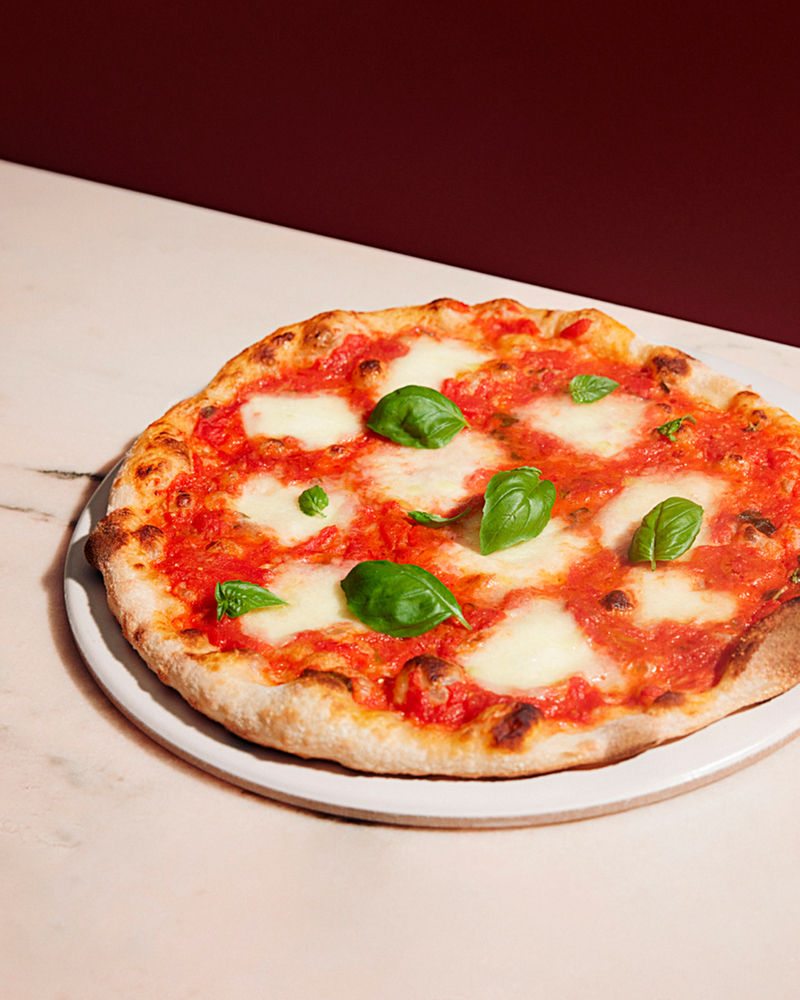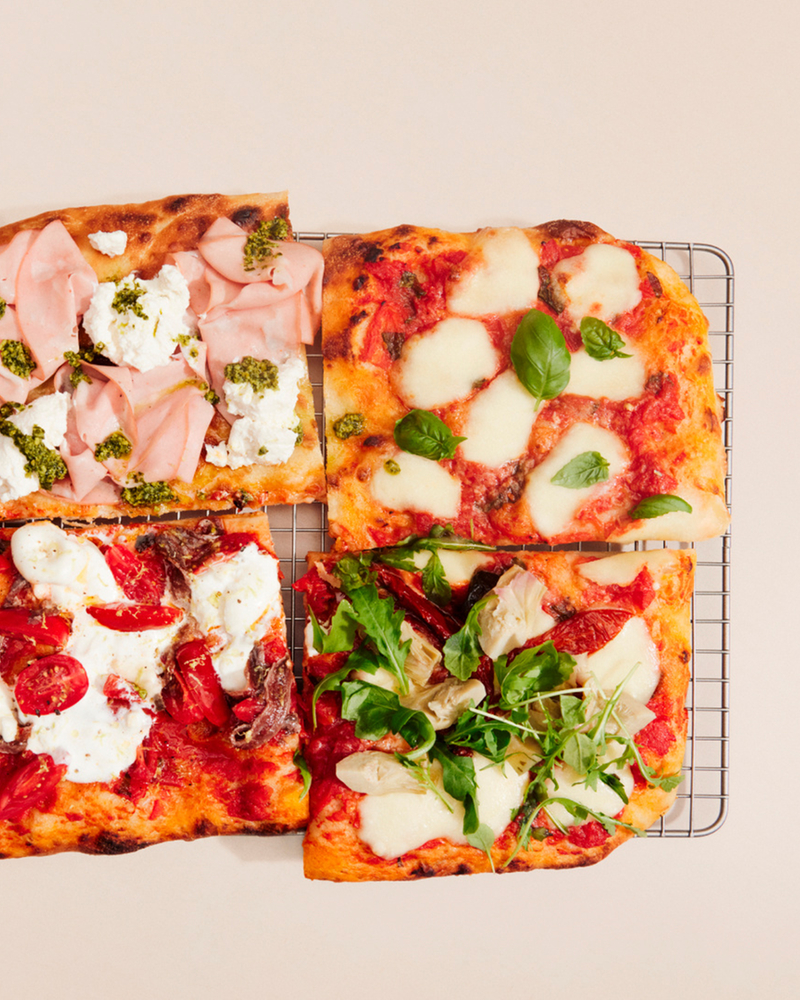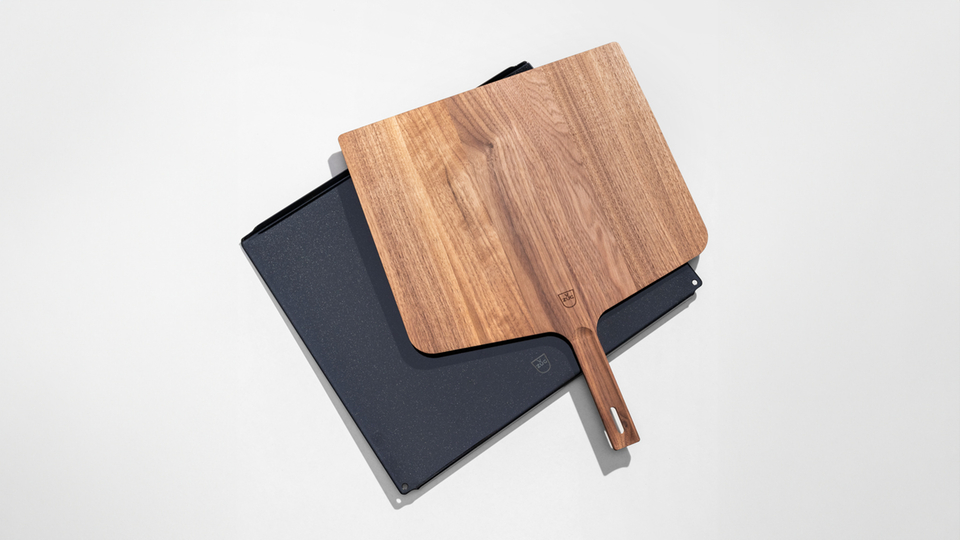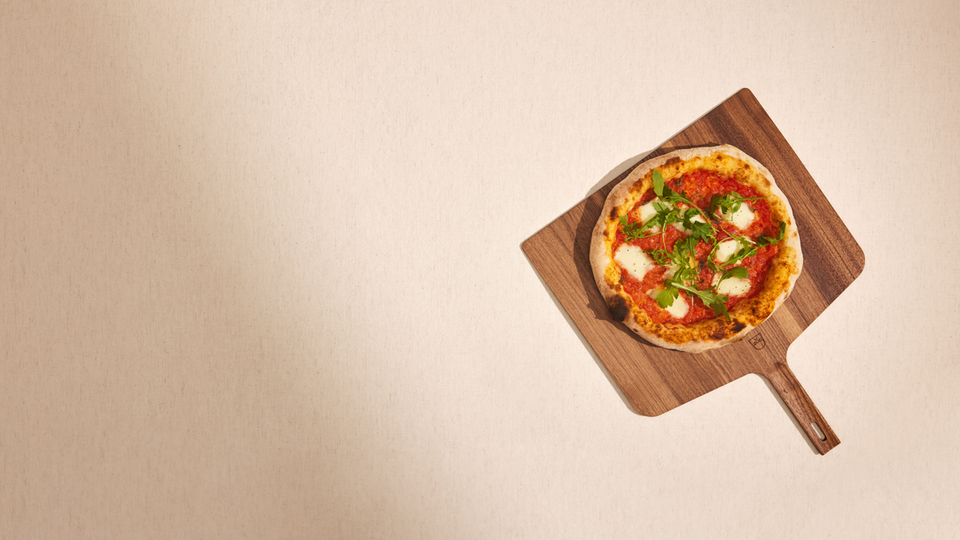Essential tools
Great pizza starts with the right tools: a precise scale for working with small amounts of yeast, a metal dough scraper, airtight proofing containers that fit in the refrigerator, and ideally a stand mixer. For baking and serving, the pizza set with a pizza steel and wooden peel are the duo of choice.
